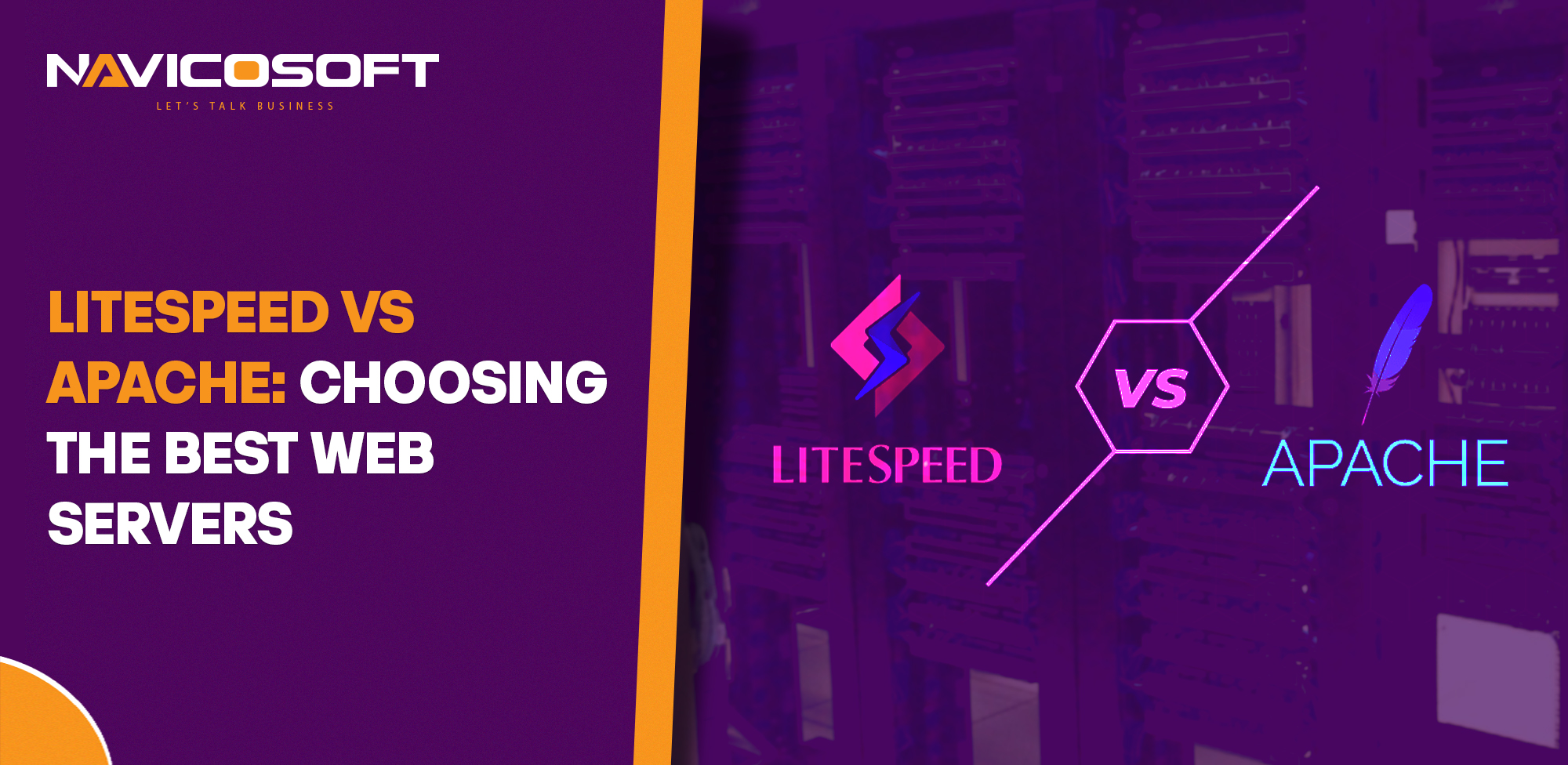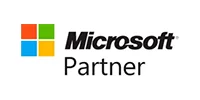Hosting services with real-time fast performance?

LiteSpeed vs Apache: Choosing the best Web Servers
The web server is a silent hero that plays a crucial role in delivering content to the browser. These days, the two most prominent web server softwares are Apache and Litespeed. Both softwares are known for accelerating web performance and security. So, when it comes to the clashes between the two server softwares, it takes time and effort to choose one. LiteSpeed vs Apache is a battle of supremacy. This article will help you decide what the right option is for you. The comparison of features, scalability, performance, and suitability of both web servers enables you to decide on your web hosting requirements. Before moving towards contrast, let’s have a look at what the web server is.

What is a Web Server?
A web server is a special computer with a software component dedicated to deliver requested web content over the internet or local network. The web server serves the web content over the internet. Its main purpose is to store, process, and deliver the web pages and to display the web content to the users on their request. A web server can host single or multiple websites that are called virtual hosting. There are different types of web server available for users that are free and paid as well.
Parts of Web Server:
- Hardware: Powerful machine that include Processor, Storage Drive and RAM
- Web Server Software: computer program responsible for processing HTTP requests and delivering content.
Popular Web Server Softwares:
There are many options when it comes to web server software and most famous of them include Apache, litespeed, Nginx, Microsoft Internet Information Services (IIS) and others.
Why is Apache of immense importance in Web Servers?
Apache is a globally popular web server software due to its large availability and also takes the crown as a free, open-source platform. Apache is known for its unique features and functions, including flexibility, stability and community support. Apache has been a dominating web server software since its inception in 1995, maintained by the software foundation.
But at that time, it was based on some hacky or clunky software. Now, this seasonal veteran is adaptable to various website configurations as it is preinstalled on all Linux distributions. An open community of developers supports and maintains this configurable architecture for small to large enterprises. A Multi-Processor Module is used to accept and handle requests and command the network ports. It manages all the web applications, websites and APIs. It has now become the cornerstone of web infrastructure in the web world.
What are the beneficial Features of Apache?
Here are some features of Apache:
More Stability:
Apache is a strong server software that has been around for years and has undergone many rigorous tests and refinements. Its consistency in delivering quality content has made it a favorite of clients.
Flexibility of Apache:
Apache offers great access control and flexibility to the clients; they can add functionalities via many modules, including a proxy server and load balance. This quality makes Apache the best way to achieve the website’s goals.
Large Active Community:
Due to Apache’s immense popularity, it is supported by an active online community that contributes to its development. The user can help online from wealth resources to handle troubleshooting issues.
Cross-platform compatibility:
Apache has great compatibility with various operating systems, including MacOS, Linux, and Windows. This feature makes it ideal for Administrators and hosts.
Extensive module library:
Apache comes with an extensive collection of modules, including authentication schemes. Furthermore, these modules can be easily turned on and off according to the website’s needs. They provide specific package support for TCL, Python, and others.
Highly Customizable:
It allows customers to customize the website through configuration files, and administrators are enabled to tailor the server for specific needs.
Advance security fearures:
Apache comes with advanced security features, including SSL/TLS support, access control, and authentication modules. Furthermore, Apache can handle significant traffic, and users can scale up or down to meet their needs.
What are Drawbacks of Apache that one needs to pay attention to?
Although Apache is the web provider’s popular choice, proper maintenance and configuration can reduce some considerations.
Complex configuration:
Everyone knows that Apache has complex configuration files that require work to manage. Because of this, it could be better for beginners.
Resource-intensive nature:
Apache can handle heavy loads, but it may consume significant RAM and memory resources and also affect the loading speed.
Lack Stability in performance:
Apache is a stable web server, but it lacks high stability performance as compared to other web servers. Its performance is slower, especially with static content. That’s why apache is not suitable for large websites.
Security issues:
Apache offers security from viruses and malware. But it requires regular updating for security maintenance. The configuration settings of apache are complex and a bit difficult to understand. It requires some skills for configuration. Furthermore, it offers less functionality and flexibility and requires constant updation for performance.

How LiteSpeed is the Performance Powerhouse?
Litespeed is one of the prominent web server software option popular for its performance. LiteSpeed technologies developed it and emerged as a competent Apache server in the market. It delivers high performance, superior speed, and more efficiency than Apache.
This proprietary server solution of LiteSpeed Technologies was released in 2003. It has come with advanced features to read Apache configurations. In addition, it can also integrate with control panels like Plesk, cPanel, and others. Instead of using the Apache code base, litespeed prefers to use Nginx’s base code. It lowers the traffic load on the server and is an ideal solution for websites, along with its support for HTTP/2 protocol.
Features of LiteSpeed:
Here are some key features of LiteSpeed that make it a better choice:
Event-based Architecture:
This web server has a unique architecture that can reduce resource consumption and improve concurrency. This enables the website to handle high-traffic loads. LiteSpeed has a faster loading time than Apache for static content. Furthmore, it also improves the website’s response time. The innovative architecture of software allows it to scale resources and utilize them to achieve goals.
Provides HTTP/3 Support:
LiteSpeed offers support for various of the latest web protocols, like HTTP/3 (QUIC). This support enables LiteSpeed to provide fast and secure connections.
LiteSpeed offers Cache solution:
LiteSpeed has a built-in cache solution that removes dynamic cache content. This feature reduces the server load and increases the website’s performance. This improves the website’s efficiency.
Security Enhancements:
Security is a priority for every customer, and LiteSpeed builds more trust with its users through advanced security features. These features include anti-DDoS measures, IP access controls, and real-time malware scanning. They protect websites from cyber threats and malware.
The drawback of LiteSpeed:
Like Apache, when comparing LiteSpeed vs. Apache, it is essential to consider the drawbacks of LiteSpeed Web Server as well to choose the right option for your needs.
Higher Cost:
LiteSpeed is a commercial product with high license fees. It also has a free version, but for advanced features, a premium version is required. This affects Lite Speed’s popularity over Apache and others.
Lack of Community Support:
The LiteSpeed exposure period is less than Apache. So, it has a smaller community of developers than Apache and others. The community works hard to handle technical and other issues and answer queries for better support.
Compatibility issues with modules:
LiteSpeed shows compatibility with Apache configurations and modules. It may create migration challenges. It also has a limited ability to customize certain behavior.
LiteSpeed vs Apache: How to Choose?
Litespeed and Apache are two great web server softwares with their weaknesses and strengths. But when selecting the best one, it is necessary to consider the key factors to achieve your goals;
Performance:
While comparing LiteSpeed vs Apache, LiteSpeed, with its asynchronous architecture, is more flexible and can easily handle heavy traffic. The smart caching method removes unnecessary data and enhances performance. So, for static content, LiteSpeed is the winner with its unique features that improve the performance of the website. It also improves PHP performance and makes static content faster than its rival, Apache. It doesn’t require much RAM.
Security:
Both LiteSpeed and Apache have robust security systems. LiteSpeed’s QUIC support and built-in anti-abuse system make it an ideal option for advanced security. Apache also releases regular security updates with safety security standards. However, it still needs a security management system to manage all features. LiteSpeed features are advanced and also support Apache mods-security rules.
Flexibility:
When comparing LiteSpeed vs Apache, the flexibility option must be considered. LiteSpeed offers more flexibility to large traffic fluctuations, while Pace’s flexibility depends upon extensive configuration options.
Community Support:
Apache has a vast open-source community, as it is older than LiteSpeed. It comes with unparalleled support and resources. On the other hand, LiteSpeed has less community exposure, which limits its approach.
Cost and Pricing
While comparing the cost of LiteSpeed vs Apache, Apache is a budget-friendly approach, while LiteSpeed requires additional licensing fees for premium features.
Compatibility and Integration:
Apache offers the best compatibility with different operating systems compared to LiteSpeed. It needs additional configurational settings for the best performance and seamless integration. LiteSpeed allows integration with cPanel’s hosts, while Apache can work with cPanel.
User-friendly Interface:
People prefer web servers with a user-friendly interface. Apache allows the web configuration of its users to manage passwords, and do many more things with Apache’s .htaccess file. While an intuitive graphical user interface of litespeed is used for web configurations. It allows the implementation of redirects, the opening of firewall ports, and even reading Apache’s htaccess file.
Scripting Language Support:
Apache supports various scripting languages with the help of third-party modules such as mod_php, mod_python, and mod_perl. Conversely, LiteSpeed offers support for all scripting languages, including Perl, PHP, Ruby, Java, and Python.
HTTP3 Support of LiteSpeed vs Apache:
LiteSpeed offers of robust support for HTTP3, and Apache doesn’t provide support for HTTP3.
Conclusion
In conclusion, with the comparison of LiteSpeed vs Apache, it is challenging to find the best one. Each web server has weaknesses and strengths, and they are superior to each other in many ways. Apache is the best solution for budget-concious people, while LiteSpeed Web hosting is an ideal approach for security concerns. So, it all depends upon your priorities and goals. This article will help you choose the best one. Choose carefully the option that has more advantages for you.
FAQs
How does performance differ between LiteSpeed and Apache?
LiteSpeed has better security features in high-traffic flows. It can handle more stimulus connections with less memory than Apache.
Are there any differences in security features?
LiteSpeed and Apache have advanced security features. LiteSpeed has anti-DDoS protection. It is more effective for handling security issues and threats than Apache.
How do LiteSpeed and Apache compare in terms of compatibility?
Apache has a long history and extensive usage, that’s why it is highly compatible with various modules. Meanwhile, liteSpeed comes with advanced features and is compatible with rewrite rules and Apache configurations. o it is easy to use for users.













